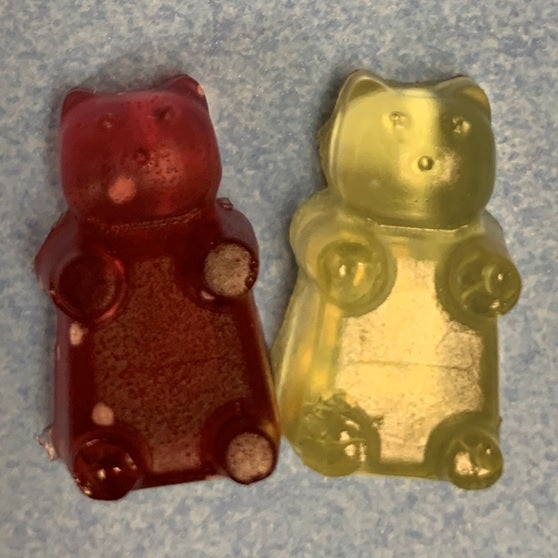Future wind turbine blades could be recycled into gummy bears
Scientists have invented a material for wind turbines that can also be used to make household products or candy
Your support helps us to tell the story
From reproductive rights to climate change to Big Tech, The Independent is on the ground when the story is developing. Whether it's investigating the financials of Elon Musk's pro-Trump PAC or producing our latest documentary, 'The A Word', which shines a light on the American women fighting for reproductive rights, we know how important it is to parse out the facts from the messaging.
At such a critical moment in US history, we need reporters on the ground. Your donation allows us to keep sending journalists to speak to both sides of the story.
The Independent is trusted by Americans across the entire political spectrum. And unlike many other quality news outlets, we choose not to lock Americans out of our reporting and analysis with paywalls. We believe quality journalism should be available to everyone, paid for by those who can afford it.
Your support makes all the difference.Designing a wind turbine is a careful process – you need a material that’s strong enough to withstand strong gusts of wind while spinning around hundreds of feet above the ground.
That’s why the blades are made of fibreglass, a super strong material. But fibreglass isn’t very recyclable, and as turbines finish their lifespans, many of those blades end up in landfills.
But now, researchers at Michigan State University have developed a new material that could make wind turbine blades a little more re-usable — and, they say, could also be turned into a wide variety of other products, including gummy bears.
This material “can be used over and over again in an infinite loop,” John Dorgan, one of the engineers behind the new material said in a press release.
“That’s the goal of the circular economy.”
The material is a resin, a substance used in making plastics — or in making fibreglass, which is plastic embedded with glass fibres.
The material the Michigan State researchers made can be shaped into fibreglass by mixing it with glass fibres, just like standard fibreglass. But you can also later dissolve this new fibreglass and remove the glass, or reshape it into a new object, the team said via the release.
The resin can be mixed with other substances to make prefabricated “rocks” or other kinds of plastics as well.
But most interestingly, the resin can be broken down into other chemicals to form even more products — including potassium lactate, which is used to make food like candies.
“We recovered food-grade potassium lactate and used it to make gummy bear candies, which I ate,” Dr Dorgan said.

Dr Dorgan will be presenting the research behind this new material at an American Chemical Society conference this week.
This resin is still a long way away from actually being used to produce electricity in real turbines. For one, they’d still need to actually test out some turbines made from their new material. And there’d need to be more supply of some of the ingredients to scale up production, they added, via the press release.
In 2020, Bloomberg reported that around 85 per cent of a wind turbine’s components, like steel and copper, can be recycled. But not the fibreglass blades, many of which end up in landfills, the publication added.
Recycling the materials that create green energy will only get more important as the climate crisis — spurred largely by the greenhouse gasses emitted from fossil fuels — grows.
Many governments and companies are looking to scale up renewable energy to combat the climate crisis. But mining new materials or producing some of the components used in renewable technology like wind turbines, solar panels and batteries can have its own carbon footprint, meaning you’re emitting carbon to create carbon-free energy.
If these materials can come from recycled sources, however, that could help reduce emissions.




Join our commenting forum
Join thought-provoking conversations, follow other Independent readers and see their replies
Comments